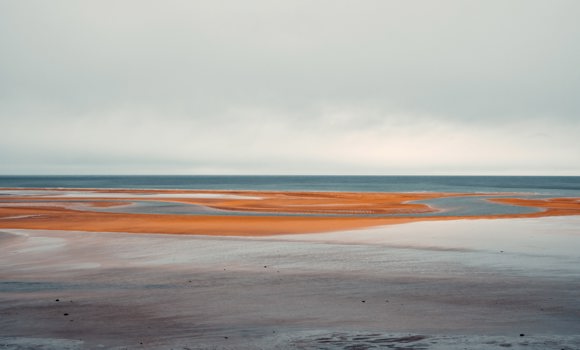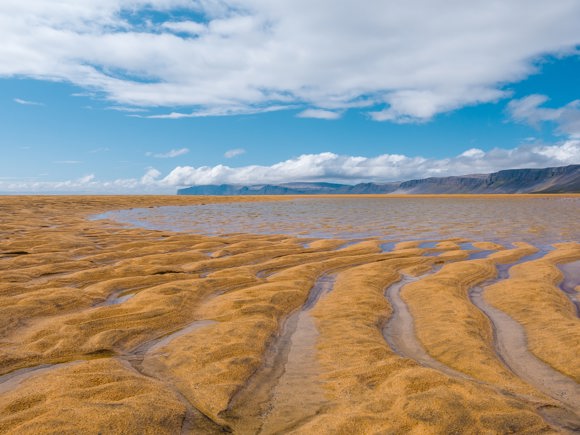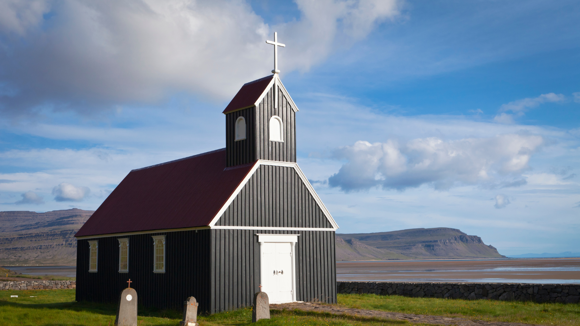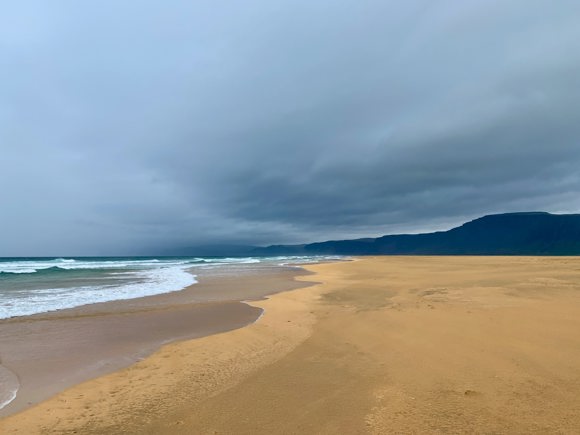Guide to The Westfjords’ Rauðisandur Beach

The Westfjords’ Rauðisandur Beach
Iceland is well known for its volcanic activity, resulting in truly unforgettable landscapes that include glacial lakes, lava fields and beaches with sand in shades you never thought you’d see. One of the most memorable beaches to visit is Rauðisandur Beach, located in the Westfjords, which is unusual because, unlike the rest of the beaches in Iceland, the sand here is red. What makes it even more interesting, is that depending on the time of day you visit and the light, the sand could appear golden or even pink.
What causes the red sands at Rauðisandur Beach?
While many people associate black sand beaches with Iceland, the Westfjords region is unique in that the beaches in this area are usually red, gold or pink. The name of this beach, Rauðisandur, can be translated to mean “red sands,” which is perfectly fitting. But what makes the sand at this beach red?
Unlike the black sand beaches of Iceland, the sand of Rauðisandur has nothing to do with volcanic activity. Black sand beaches are formed when hot lava flow has met the cold sea and solidified, then broken down over many thousands of years. Instead, the pinkish-red sands of this stunning beach have been formed over time by crushed scallop shells.

History of Rauðisandur Beach
There is more to this red sand beach than just its colouring. It is home to a series of murders in the 1800s that have left a curious mark on the area. The events allegedly took place at Sjöundá farm. Around the year 1800, two married couples resided on the farm, setting the stage for a fateful affair between Bjarni Bjarnason and Steinunn Sveinsdóttir.
In the year 1802, the lives of Jón Þorgrímsson and Guðrún Egilsdóttir, spouses of Bjarni and Steinunn, took a dark turn. Guðrún succumbed suddenly, while Jón's lifeless body was discovered on the shores of Rauðasandur.
Bjarni and Steinunn were arrested and faced trial for the murders. Bjarni claimed Jón had fallen from cliffs into the sea, but the unbroken state of Jón's body, washed ashore the following autumn, contradicted his story.
Steinunn confessed to poisoning Guðrún's porridge, causing her illness, and evidence pointed to suffocation. The tragedy involved 11 children: Bjarni and Steinunn had five children each, and they shared one child named Jón.
Found guilty, Bjarni and Steinunn received death sentences and were imprisoned in Reykjavík. Unable to find an executioner, they were to be transferred to Norway for execution. However, Steinunn, with a child in custody, died in prison in 1805 before reaching Norway. Bjarni then faced torture and execution in Norway in the same year. After their deaths, the fate of Bjarni’s five children, placed in foster care, ended in tragedy.
Steinunn, deemed unfit for burial in holy ground, was interred under a pile of rocks known as "dysjuð" near Hallgrímskirkja church in Reykjavík. Passers-by were encouraged to cast rocks onto the pile, eventually called Steinkudys. In 1915, rocks were taken for the construction of the harbour, prompting the National Museum Director to halt the removal. Steinunn's bones were then buried in an unmarked grave at Hólavallakirkjugarður cemetery, with Dómkirkjan church ministers refusing involvement.
In 2012, Steinunn's descendants placed a gravestone at her resting place, bringing recognition to the tragic figure with over 2,000 descendants. The grave received rock from Sjöundá farm and red sand from Rauðasandur. In 2019, Christmas lights adorned her grave, and a minister from Dómkirkjan church marked it with a cross. The tale remains a poignant chapter in Icelandic history.

How to get to Rauðisandur Beach
Located along the eastern tip of the Westfjords, Rauðisandur is a wonderfully quiet and remote 10km stretch of beach perfect for exploring, enjoying the peace and taking beautiful photographs. Due to the remote location of the beach, getting there can be slightly difficult.
From Reykjavík, you will need to head north on Route 1, or the Ring Road, until just after the village of Bifröst. At this point, you will head into the Westfjords on Route 60. This route will take you deep into the Westfjords, along some of the most scenic coastlines in the Northern Atlantic.
After passing Flókalundur, you will take Route 62 all the way to Rauðisandur Beach. It’s worth noting that the roads in this area of the Westfjords are all gravel, so you’ll need to make sure you have a suitable rental car for the trip, that you plan ahead, and that you drive with extra care. In difficult weather conditions, these roads might present extra danger.

What to do at Rauðisandur Beach
If admiring the scenery and dipping your feet aren’t enough, there are plenty more enjoyable things to do at Rauðisandur. There’s a lovely cafe with sea views that serves mouthwatering Icelandic waffles and other items, a nearby campground, a charming black church called Saurbæjarkirkja, and lots of terrains to explore. If you’re lucky, you might be able to spot seals bathing in the sun!
Once you’ve finished exploring the area, you can drive an hour further along the coast to visit the famous cliffs at Látrabjarg or head to the incredible viewpoint that is on Bolafjall Mountain. This is the most western point in all of Europe and is home to a fantastic array of seabirds.
After a fantastic day, you can head back to your comfortable room at our Fosshotel Westfjords.